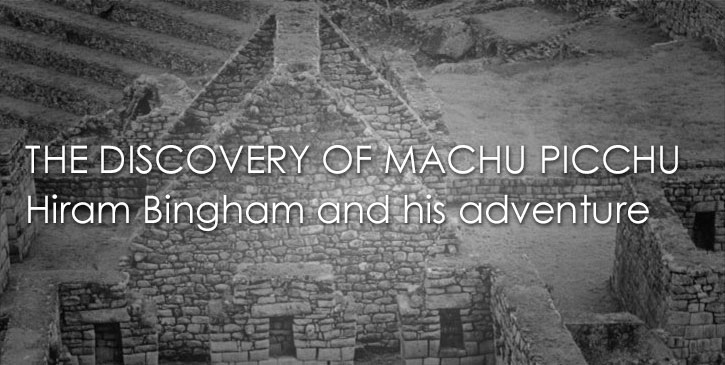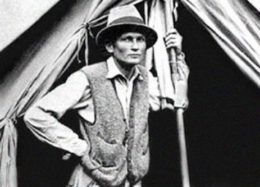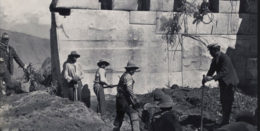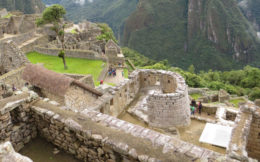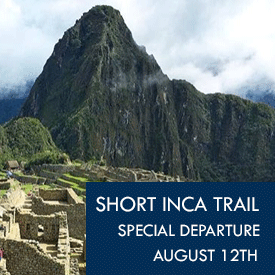Hiram Bingham (November 19, 1875 – June 6, 1956) was born in Honolulu, Hawaii and was an American academic, explorer and politician. He made public to the world the discovery of the Inca citadel of Machu Picchu in 1911 -although he thought he had found another place-, to where he arrived with the help of Peruvian indigenous people from the Cusco region. Here we will describe Bingham’s exciting adventure.
The Machu Picchu Discovery and Hiram Bingham’s Theory
The existence of Machu Picchu was known beforehand by farmers from Cusco who lived near the area; moreover, it is said that in 1867 German explorer Augusto Berns was at the citadel, but for unknown reasons, he didn’t make a scientific study of the site, so Hiram Bingham is credited as the first person who conducted serious inquiries about Machu Picchu.
Hiram Bingham had been an explorer since childhood, being taught by his father to do mountain trails. Later, this was key in helping him when he developed his passion for Latin American history, actually he was a professor of this field at Yale University, and traveled across South America on some occasions. As is known, the Cusco region is at the Andes highlands with trails that go across the mountains.
In July 1911 Hiram Bingham was the leader of a Yale University discovery expedition which aimed at finding Vilcabamba, “the lost city of the Incas”; history says that Vilcabamba was the place chosen by the remaining Inca leaders to install a resistance government after the Spanish invaders conquered Cusco city, the capital of the Inca empire. It was a place so remote and hidden that the Spaniards never found it, and which stayed in rebellion for some 35 years; the Inca court and army were there all this while. The Yale discovery expedition wanted to find the city for it was thought to have major archaeological and historical value, and also for the possibility of finding large royal treasures in gold and silver, although the Incas valued them more for ornamental and religious reasons, since what we can call wealth in Inca economy was the ownership of agricultural resources and technology.
Hiram Bingham talked to some Peruvian authorities who advised him to search the Urubamba river valley in order to find new archaeological remains, and Bingham thought this place could be the location of the lost city of Vilcabamba. By the end of that month, Bingham, led by some Cusco region farmers, arrived at the Machu Picchu citadel, which was covered with dense, profuse vegetation; he conducted an initial exploration of the site, and later in 1912 he did the proper excavations.
However, Bingham was always convinced the discovery was about the lost city of Vilcabamba -although architectural evidence strongly suggested it was a religious place, not political resistance headquarters- ; only by the mid-20th century more advanced archaeological technology found that the bodily remains left in Machu Picchu were of all genders, contrary to Bingham’s theory that they were only female (the servants of the Inca emperor). The fact of having mixed genders remains meant that the citadel was not the refuge of a fleeing king but a place where Inca royalty had to be helped by many servants. Thus, the site of the discovery was not Vilcabamba at all, it was the sanctuary of Machu Picchu.
Nonetheless, Hiram Bingham is acknowledged for a major contribution to world archaeology, because his works made the citadel available for scientific research, and for writing several books about his findings. And of course, thanks to this fact, Machu Picchu became a top, premier touristic destination renowned worldwide, and praised by all visitors, who call it the experience of a lifetime and that everybody can experience it today in great fashion.
You can appreciate all the beauty of the Machu Picchu landscape after hiking the Huayna Picchu mountan tour.
The Machu Picchu Sanctuary Today and Its Importance
The picture we now have about the Machu Picchu discovery is that it was a sanctuary and a luxury retreat for Inca royals and leaders, along several generations; the fact that it was built on such an odd place, a truly construction challenge who scares even nowadays engineers, points out that its location had an inescapable mystical imperative. And the amazing natural beauty, quietude and energy flow made this place ideal for Inca leaders to get away from everything and take important political decisions.
Nowadays, the Machu Picchu sanctuary is one of the world’s top destinations, and TOUR IN PERU offers a wonderful variety of packages including Machu Picchu and other amazing Inca archaeological sites, with our 8 years of experience and the best customer service. Our travelers express their joy and satisfaction for their Machu Picchu experience with us, and want to come back as soon as possible!
Our Machu Picchu packages can be entirely personalized to suit our clients’ needs; also, we offer private tours and private services, certainly the best way of having the top traveling and touring experience in the Andean highlands’ sanctuary.
Relive Hiram Bingham’s wonderful discovery adventure on the magnificent, beautiful Inca highlands! Contact our tour experts for booking your tour!
